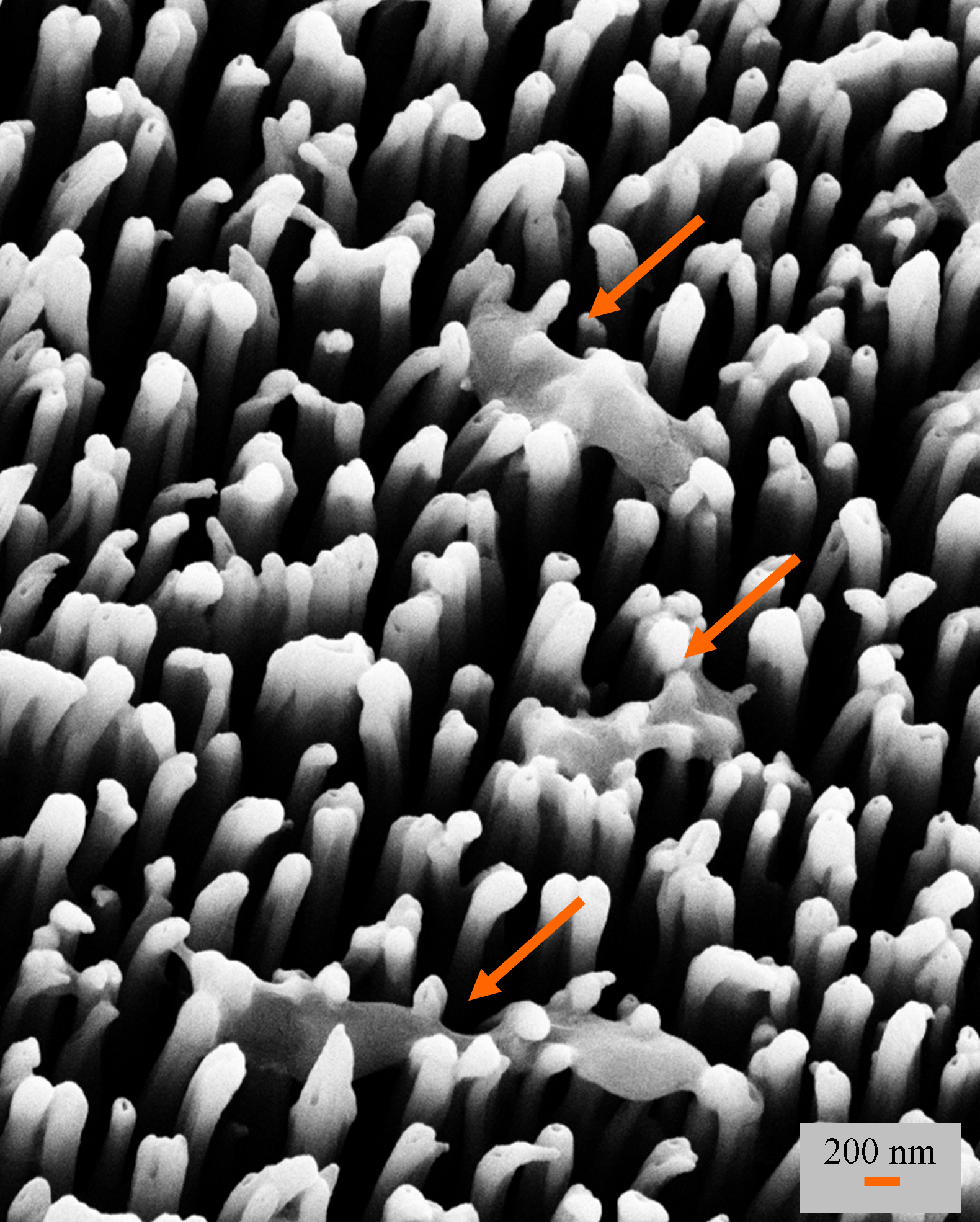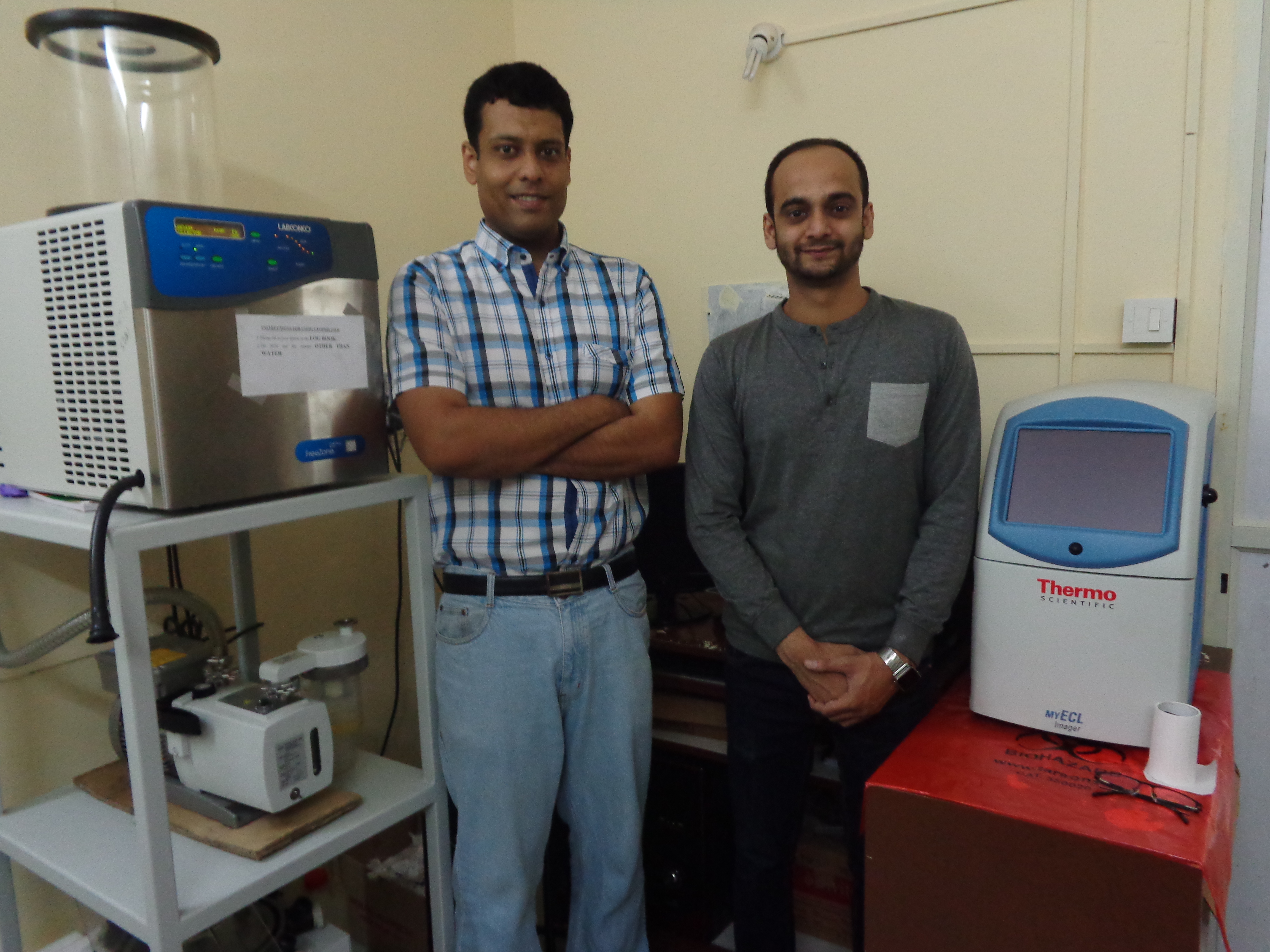Learning from insects: Engineering antibacterial nanostructures
Bacterial infections pose a significant threat to human health. These infections can spread from the contaminated surfaces where bacteria adhere and grow through by forming colonies called biofilms. With advances in modern medicine, there is growing use of biomedical implants for treating various diseases. The surfaces of implants are conducive for biofilm formation and infection associated complications are widespread. Nature offers unique solutions to minimize biofilm formation. Nanoscale surface patterns found on certain insect wings and gecko feet can kill bacteria by mechanically rupturing the cells. Inspired by such unique surfaces found in nature, researchers in IISc have fabricated nanoscale pillars by etching the surface of titanium, a material widely used to prepare orthopaedic devices such as like hip joints, screws and bone plates, etc. Laboratory tests reveal that these surfaces kill a wide variety of bacterial cells solely by the action of the surface architecture of nanoscale pillars by rupturing the cells. The killing effect is similar to the behaviour found on insect wings of cicadas and dragonflies. When implanted, it is important that these surfaces do not damage human cells. These surfaces were tested with human stem cells extracted from bone marrow, which can turn into bone cells. The stem cells grow well on the surfaces and efficiently form bone cells suggesting that these surfaces could find use as infection-free implants.

Caption: The process of nanostructuring the titanium surfaces which kill bacterial cells, keep human cells viable cytocompatible and facilitate the formation of bone cells from stem cells

Caption: “Electron micrograph shows bacterial cells ruptured by the nanopillars on the etched titanium surface”

Caption: Prof. Kaushik Chatterjee with his team member
References
1. J. Hasan, S. Jain, K. Chatterjee: Nanoscale topography on black titanium imparts multi-biofunctional properties for orthopedic applications, Scientific Reports 2017, 7: 41118
2. J. Hasan, K. Chatterjee: Recent advances in engineering topography mediated antibacterial surfaces, Nanoscale 2015, 7: 15568–15575
3. J. Hasan, S. Raj, L. Yadav, K. Chatterjee: Engineering a nanostructured “super surface” with superhydrophobic and superkilling properties, RSC Advances 2015, 5: 44953–44959
For More Information visit :https://sites.google.com/site/iiscbiomaterials/
Other Featured research






